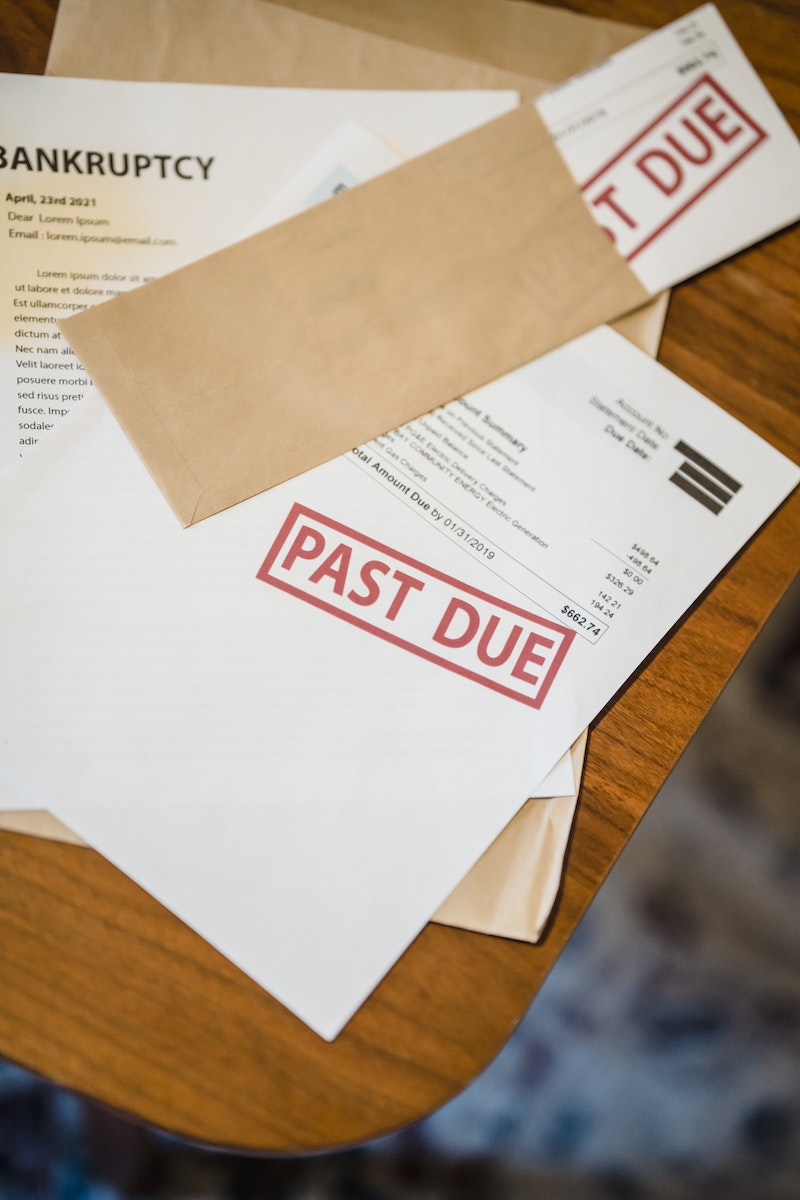10 Quick Tips and Tricks for Rebuilding Credit after Bankruptcy within Legal Boundaries
Bankruptcy can be a challenging and overwhelming experience, but it’s essential to view it as an opportunity for a fresh start. Before we dive into the tips and tricks, it’s important to understand the impacts of bankruptcy on your credit.
It may have caused your credit score to take a hit, making it difficult to secure loans or obtain favorable interest rates. However, rest assured that rebuilding your credit is within your reach, and we’re here to show you how.
We understand the challenges you may face, and that’s why we’re here to guide you with expert insights and proven strategies. In this article, we’ll share 10 quick tips and tricks that will help you rebuild your credit within legal boundaries, setting you on the path to financial success.
Understanding the Impacts of Bankruptcy
Before you begin the credit rebuilding process, it’s crucial to have a solid understanding of how bankruptcy affects your credit score and financial history. Bankruptcy can stay on your credit report for several years, but its impact diminishes over time. It is categorized into two main types: Chapter 7 and Chapter 13 bankruptcy. Chapter 7 involves the liquidation of assets to repay debts, while Chapter 13 involves a repayment plan over a specified period.
By filing for bankruptcy, your credit score will be significantly affected. However, it provides a fresh start and an opportunity to rebuild your credit. It’s important to note that bankruptcy should only be considered as a last resort, and consulting with a legal professional specializing in bankruptcy is crucial to navigate through the process.
Review Your Credit Report
Start the credit rebuilding process by obtaining a copy of your credit report from major credit bureaus like Equifax, Experian, and TransUnion. Carefully review the report to identify any errors, inaccuracies, or discrepancies. Common errors include accounts that were not included in the bankruptcy filing or debts that were discharged but still appear as active.
If you spot any errors, it’s essential to dispute them immediately with the respective credit bureaus. This ensures that your credit report reflects accurate information, and any negative impact from these errors is minimized.
Establish a Budget
Creating a comprehensive budget is a crucial step towards rebuilding your credit after bankruptcy. Start by evaluating your income, expenses, and debt obligations. This will help you gain control over your finances and ensure that you can make timely payments towards your debts.
List all your sources of income and calculate your monthly expenses, including rent or mortgage payments, utilities, groceries, transportation, and other essential costs. Dedicate a portion of your income towards paying off existing debts while leaving room for savings and emergency funds. Prioritize your expenses to ensure that debt repayments are made promptly.
Consider using budgeting tools and apps to streamline the process and track your progress. These tools can help you set financial goals, track your spending, and manage your budget effectively.
Prioritize Timely Payments
Consistently making timely payments is crucial for rebuilding your credit. Payment history is one of the most significant factors affecting your credit score. Ensure that you pay all your bills, including credit card bills, loan installments, and utility payments, on time each month.
Setting up automatic payments or reminders can be a helpful strategy to ensure you never miss a payment deadline. Take advantage of online banking and payment platforms to schedule automatic payments for recurring bills. Alternatively, set reminders on your phone or use a calendar to keep track of payment due dates.
By prioritizing timely payments, you demonstrate responsible credit behavior and establish a positive track record, which is essential for rebuilding your credit.
Apply for a Secured Credit Card
A secured credit card can be a valuable tool for rebuilding credit after bankruptcy. Unlike traditional credit cards, secured credit cards require a cash deposit as collateral, which becomes your credit limit. By using a secured credit card responsibly, you can demonstrate your ability to manage credit and make timely payments.
To get started, research reputable financial institutions that offer secured credit cards. Compare their terms, fees, and interest rates to find the one that best suits your needs. When applying for a secured credit card, make sure to choose a card issuer that reports to the major credit bureaus. This way, your responsible credit usage will be reflected in your credit history.
Once you receive your secured credit card, use it wisely. Make small purchases that you can comfortably pay off in full each month. Aim to keep your credit utilization ratio—the amount of credit you use compared to your credit limit—below 30%. By consistently making on-time payments and keeping your credit utilization low, you can gradually rebuild your credit score.
Diversify Your Credit
Having a mix of credit types can positively impact your credit score and demonstrate your ability to handle different forms of credit responsibly. While a secured credit card is a great starting point, consider diversifying your credit portfolio further.
One option is to apply for a small personal loan or a credit-builder loan from a reputable financial institution. These loans are specifically designed to help individuals rebuild credit. Make sure to make all your loan payments on time and in full. This will not only improve your credit mix but also establish a positive payment history.
It’s important to note that while diversifying your credit can be beneficial, it’s crucial to manage your credit responsibly and avoid taking on more debt than you can handle.
Keep Credit Utilization Low
Credit utilization refers to the percentage of your available credit that you’re using. Keeping your credit utilization low is crucial for maintaining a healthy credit score. High credit utilization can indicate a higher risk of default to creditors.
One way to keep your credit utilization low is to pay off your credit card balances in full each month. This shows responsible credit management and helps keep your credit utilization ratio low. Additionally, you can consider requesting a credit limit increase on your existing credit cards. However, it’s important to use the increased limit responsibly and avoid falling into the temptation of overspending.
Remember, maintaining a low credit utilization ratio shows lenders that you’re using credit responsibly and can positively impact your credit score.

Be Selective with New Credit Applications
While it’s important to diversify your credit, it’s equally important to be selective when applying for new credit. Each credit application results in a hard inquiry on your credit report, which can temporarily lower your credit score.
Before applying for new credit, carefully assess your needs and the potential impact on your credit score. Consider whether the credit is necessary and if you have the means to make timely payments. Applying for credit only when needed and being cautious about taking on new debt can help you maintain a positive credit profile.
Build Positive Credit History
Building a positive credit history is a crucial aspect of credit rebuilding. Consistently demonstrating responsible credit behavior over time can significantly improve your credit score.
Make it a priority to pay all your bills on time. This includes not just credit cards and loans, but also utility bills, rent, and other recurring expenses. Late or missed payments can have a negative impact on your credit score and make the credit rebuilding process more challenging.
Additionally, avoid accumulating new debt unless necessary. Focus on paying off existing debts and maintaining a low credit utilization ratio. Keep your old accounts open, even if they have a zero balance, as they contribute to the length of your credit history, which is an important factor in calculating your credit score.
Another effective strategy for building positive credit history is becoming an authorized user on someone else’s credit card. If you have a trusted family member or friend with a good credit history, ask them to add you as an authorized user. Their positive payment history and responsible credit usage will reflect on your credit report, helping you establish a positive credit history.
Seek Professional Guidance
Rebuilding credit after bankruptcy can be complex, and it’s beneficial to seek professional guidance. Consider consulting with a credit counselor or a reputable credit repair agency that specializes in assisting individuals with credit recovery. They can provide personalized advice and strategies tailored to your specific situation.
A credit counselor can help you understand the nuances of credit laws, provide insights into credit building techniques, and offer valuable guidance on managing your finances effectively. They can work with you to create a customized plan to rebuild your credit within legal boundaries.
When seeking professional guidance, ensure that you choose a reputable and trustworthy organization. Research their credentials, read reviews, and verify their accreditations to make an informed decision. A reliable credit counselor or credit repair agency can be a valuable partner on your credit rebuilding journey.
The Benefits of Implementing These Tips and Tricks
By implementing these quick tips and tricks for rebuilding credit after bankruptcy, you can experience several benefits:
- Improved Credit Score: Consistently following these strategies will help improve your credit score over time, opening up opportunities for better interest rates and loan approvals.
- Financial Stability: Rebuilding credit allows you to regain control over your finances, establish healthy financial habits, and work towards long-term financial stability.
- Access to Credit: As your credit score improves, you’ll have access to more credit options and favorable terms, enabling you to achieve your financial goals.
- Rebuilding Trust: Responsible credit rebuilding demonstrates your commitment to financial responsibility, helping to rebuild trust with lenders and potential business partners.
Putting the Tips and Tricks into Action
To help you put these tips and tricks into action, here are some valuable resources and tools:
- Credit Reporting Agencies:
- Equifax, Experian, TransUnion
- Budgeting Tools and Apps:
- Mint, YNAB (You Need a Budget), Personal Capital
- Secured Credit Card Providers:
- Capital One, Discover, Citi
- Credit Counseling Agencies:
- National Foundation for Credit Counseling (NFCC), Financial Counseling Association of America (FCAA)
Take Charge of Your Credit Rebuilding Journey
Rebuilding credit after bankruptcy requires patience, discipline, and a proactive approach. By following the quick tips and tricks outlined in this article, you can take charge of your credit rebuilding journey and pave the way towards a brighter financial future.
Remember, understanding the impacts of bankruptcy, reviewing your credit report, establishing a budget, prioritizing timely payments, applying for a secured credit card, diversifying your credit, keeping credit utilization low, being selective with new credit applications, building positive credit history, seeking professional guidance, and implementing these tips and tricks can all contribute to your credit recovery.
With dedication and perseverance, you can rebuild your credit within legal boundaries and enjoy the benefits of an improved credit score, financial stability, access to credit, and rebuilding trust. Take advantage of the resources and tools provided, and don’t hesitate to seek professional assistance when needed.
If you have already started rebuilding your credit after bankruptcy, we would love to hear about your experiences and any additional tips you can share. Leave a comment below and join the conversation. Together, we can empower each other to achieve financial success.
